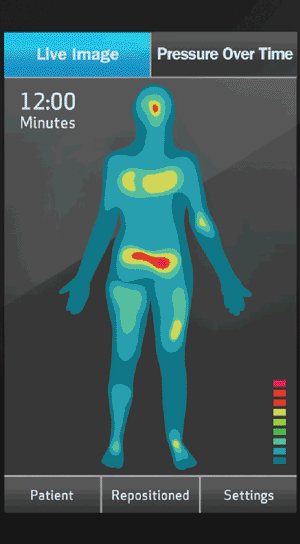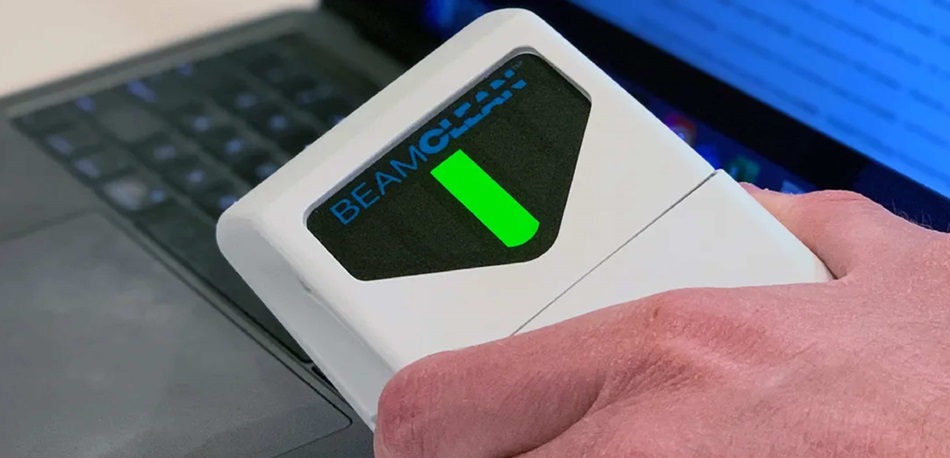Pressure Detecting Surface Helps Relieve Bedsores
By HospiMedica International staff writers
Posted on 17 May 2011
An innovative bedside patient pressure mapping system assists caregivers in effectively repositioning bed-ridden patients. Posted on 17 May 2011
The Monitor, Alert, and Protect (MAP) system helps take the guesswork out of repositioning nonambulatory hospital patients and nursing home residents, a useful tool to assist caregivers in preventing pressure ulcers. The system is based on a coverlet with built-in pressure sensors over a patient or resident sleep surface; once the patient is lying down, the system identifies areas of pressure and produces a live color-coded image on an easy-to-read bedside monitor. The system also monitors the buildup of pressure over time at preset intervals and alerts the caregivers when a periodic repositioning is due. An instant feedback mechanism guides the caregiver through the process of off-loading potentially harmful high pressure points.

Image: The Wellsense MAP system monitor (Photo courtesy of Wellsense).
Early testing demonstrated that the system provides numerous benefits, including the discovery that many hospital mattresses and therapeutic support surfaces (also known as airbeds) were not providing adequate pressure relief. Healthcare staff reported that the system helped them improve their repositioning skills; timing; detection skills; decisions regarding proper support surfaces; and their overall ability to help prevent pressure sore development. Future planned advances in the technology could include sheer alerts, moisture and temperature sensing, as well as other adaptations for different seating surfaces and bed-fall early warning. The Map system is a product of Wellsense (Jerusalem, Israel).
"The MAP System is designed to help caregivers stop problems before they begin by guiding them through proactively repositioning patients based on visual data," said Mitch Steiner, President of Wellsense. "Most pressure ulcers result from a combination of both pressure and time and most repositioning regimens are ineffective because you can't see where the pressure is located. Since the MAP displays color-coded areas to be off-loaded and alerts the caregiver when the individualized repositioning regimen is due, it provides the caregiver with specific information to allow a prompt and effective intervention while completely taking the guess work out of repositioning."
Bedsores, also known as decubitus ulcers, are lesions caused by factors such as unrelieved pressure; friction; humidity; shearing forces; temperature; age; continence and medication. They can occur in any part of the body, especially over bony or cartilaginous areas such as the sacrum, elbows, knees, and ankles. Although often prevented and treatable if found early, they can be very difficult to prevent in frail elderly patients, wheelchair users, and terminally ill patients. Bedsores are often fatal, even under the auspices of medical care, and are one of the leading iatrogenic causes of death reported in developed countries, second only to adverse drug reactions. The primary cure and treatment is to remove the pressure by turning the patient regularly, often as much as every two hours.
Related Links:
Wellsense














